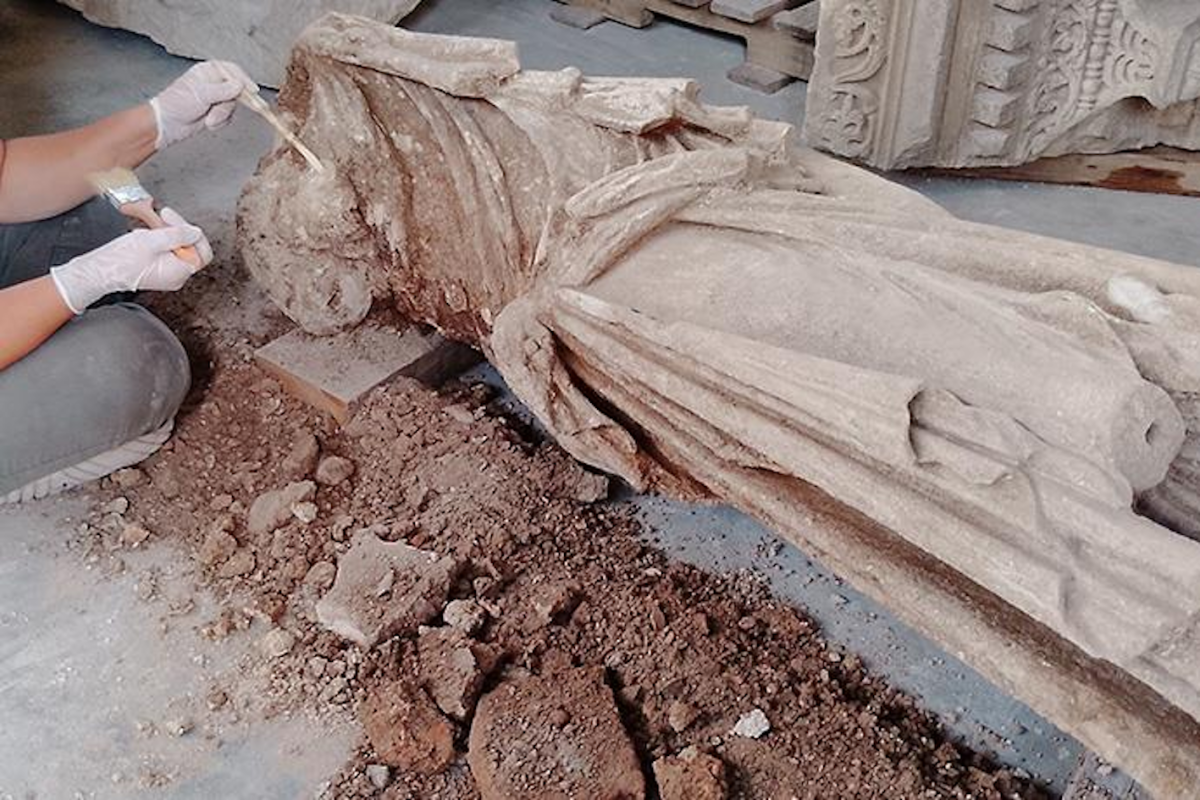A statue of a “dancing” muse has been unearthed in an ancient settlement known throughout the ages as a city of gladiators and eternal love.
Archaeologists found the statue, which is approximately 2,175 years old, during excavations carried out this year in the ancient city of Stratonikeia, located in the province of Muğla in southwestern Turkey, the country’s Ministry of Culture and Tourism announced.
The site where Stratonikeia lies has been inhabited by people continuously for more than 3,500 years, from around 1500 B.C. in the Bronze Age to the present day, according to UNESCO. Parts of it are now occupied by the Turkish village of Eskihisar.
During the Hittite Period, the settlement was known as Atriya. The Hittites were an ancient Anatolian people who formed an empire between 1650 to 1180 B.C.

But the settlement was named Stratonikeia in the third century B.C. during the Hellenistic period, when the city changed hands among several ancient Greek kingdoms such as those of the Ptolemies and the Macedonians. Eventually, the city became part of the Roman Republic in the second century.
Over time, the area came under the control of the Ottoman Empire, which was founded at the very end of the 13th century and lasted until the early 20th century, and finally the modern Turkish state.
Stratonikeia was an important site in antiquity and is considered one of the world’s largest ancient cities made of marble.
“Stratonikeia, which hosted many civilizations from antiquity to modern times, is one of the significant archaeological sites in Asia Minor and has unique characteristics,” UNESCO’s description of the site reads. “The city continuously developed during the Classic, Hellenistic and Roman Imperial periods and gradually became a center of trade, art and culture.”
Sign up for Newsweek’s daily headlines
The description continues: “Today it is a significant and unique example as a settlement that keeps the characteristics of culture of different civilizations, succeeds to preserve its main structure and shows an entirety. Stratonikeia has been known as the city of eternal love and gladiators throughout the ages. It was a center where gladiators were trained, did demonstrations and spent their life after retirement.”
The statue that was recently unearthed in the ancient city depicts a dancing muse—a deity from ancient Greco-Roman mythology. The muses were inspirational goddesses of literature, science and the arts. In some traditions, they are said to be the daughters of Zeus and Mnemosyne, the goddess of memory.
The statue found during the recent excavations is the only known original of this dancing muse from the Hellenistic period, and copies were made during the Roman period. The statue was discovered without its head and arms in the Roman baths of the ancient city.





